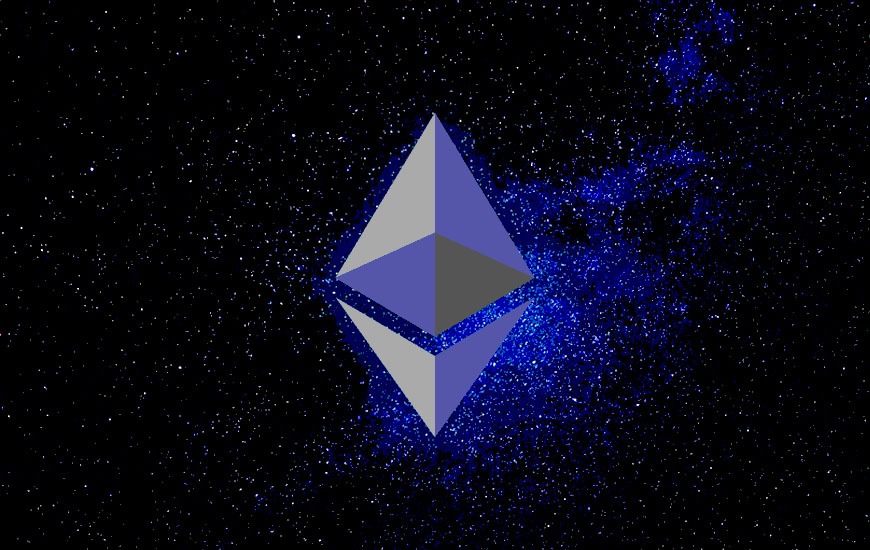- It will also give a significant boost to the network’s speed.
- Help Ethereum become a platform for a vast range of financial and commercial transactions
- Increase transaction speed from 30 transactions per second to 100,000 per second.
Ethereum is in for a transformation, and the most notable feature is doing away with the miners who track and track and validate transactions on the world’s most-used Blockchain network. Miners from the heart of a system known as proof of work. It was a process that was adopted by Bitcoin and later followed by Ethereum. However, the process came under increasing criticism for its environmental impact. Bitcoin mining involves using electricity which could equal the electricity consumption of small nations.
Ethereum and its changeover will make the ecosystem greener and much faster. The switch is planned by early 2022 and will again exemplify another difference between Ethereum and Bitcoin: A willingness to change and to see the network as a product of community as much as code.
Blockchain and Cryptocurrency are interlinked with one another. Blockchain maintains a ledger of time-ordered transactions. What is different is that this ledger is shared by computers worldwide and operated not by a central authority, like a government or a bank, but by anyone who wants to take part. Satoshi Nakamoto is the mysterious and still-unknown creator of Bitcoin and its Blockchain. Through the proof of work system, he solved what is known as the double-spend problem that snowed under earlier digital cash projects. Since the BlockchainBlockchain records every transaction on its network, someone trying to reuse a Bitcoin that has already been spent would be easily caught.
Proof of work existed before Nakamoto’s 2008 Bitcoin white paper. However, it was never put to use. Today Bitcoin and Ethereum transactions are graded as blocks verified and published to a public “chain” every few minutes. This work is done by miners whose computer undertakes millions of trial and error computations for input into the required output. The miner who can produce the required output shares it with the network, which checks to see if it works, and is rewarded for the effort with free Cryptocurrency. However, no one would invest the electricity, computer hardware, and other mining expenses unless coins are worth at least that amount.
Mining was very cheap during the initial stages when Bitcoin was not known. As the value rose, a race started as miners poured in resources in the quest to be the first to validate a block and win new coins. This jacked up the electricity usage. Researchers at Cambridge University say that the Bitcoin network’s annual electric bill often exceeds that of Chile and Bangladesh. This led to a debate about the environmental cost of mining cryptocurrencies. The centralized mining farms became more dominant, and the very concept of a decentralized finance ecosystem came under question.
Proof of stake-Making Blockchain secure by a more straightforward process
The very idea of proof of stake is to make the BlockchainBlockchain much more secure in a more straightforward way-offer incentives to people to collaborate in checking and crosschecking transactions. It works like this –
- Anyone who puts up, or stakes, 32 Ether can take part. (Ether, the coin used to operate the Ethereum system, reached values of over $4,000 in May.)
- People are chosen from the pool at random to be “validators” of a batch of transactions, a role that requires them to order the transactions and propose the resulting block to the network.
- The validators share the chunk of BlockchainBlockchain with a group of members of the pool who are chosen to be “attestors.” A minimum of 128 attestors is required for any given block procedure.
- The attestors review the validator’s work and either accept it or reject it. If accepted, both the validators and the attestors are given free Ether.
Proof of stake advantages
The most significant benefit will be it will cut Ethereum’s energy use, estimated to be 45,000 gigawatt-hours by 99.9%. It will also give a significant boost to the network’s speed. This will be incredibly beneficial to Ethereum, striving to become a platform for a vast range of financial and commercial transactions. At present, Ethereum handles about 30 transactions per second. Vitalik Buterin, the inventor of Ethereum, thinks that could go to 100,000 per second with sharding.
Proof of stake downsides
It will be much more difficult to gain control of the process in a proof of stake system than in a proof of work system for a group, but it would still be possible. The more Ether a person or group stakes, the better the chance of being chosen as a validator or attestor. A validator that tries to manipulate the process could lose part of the 32 Ether they have staked.
How else is Ethereum changing?
The London Hard Fork included a fee reduction feature called EIP 1559. The fee cut reduces the supply of Ether as part of every transaction, creating the possibility that Ethereum could become deflationary. Since the hard fork launch, 3.2 ether per minute was being destroyed because of EIP 1559. Another significant change will be the process of dividing the Ethereum network into 64 geographic regions. Transactions within a shard would be processed individually. The results would then be reconciled with the leading network linked to all the other shards, making the overall network much faster.

With a background in journalism, Ritika Sharma has worked with many reputed media firms focusing on general news such as politics and crime. She joined The Coin Republic as a reporter for crypto, and found a great passion for cryptocurrency, Web3, NFTs and other digital assets. She spends a lot of time researching and delving deeper into these concepts around the clock, and is a strong advocate for women in STEM.


 Home
Home News
News










